How to cook tofu so it tastes good? In North America, there’s wide misunderstanding about – and even prejudice against! – this classic vegan food gifted to the world by Asian makers two thousand years ago. Let’s clear the air and make room for more tofu in our kitchens. In this article,
I will cover some key questions about tofu: how tofu is made, what are tofu’s benefits for plant-based cooks, the different kinds of tofu and how to use them, and suggestions to include tofu in both batch cooking sessions and quick meals. Be warned: some of my opinions about tofu are controversial.
Jump straight to the topics you are curious about
My tofu love story
I love tofu! But it wasn’t always the case. I remember buying a block of extra-firm tofu, using half of it, feeling underwhelmed about the results, and leaving the rest to grow moldy. I had no idea what to do with it.
Then, I moved to the West Coast and started eating at sushi restaurants more often. A wise friend introduced me to agedashi tofu – deep-fried cubes of medium-firm tofu – and I was hooked. The melt-in-your mouth pieces of silken goodness showed me that tofu is not a meat replacement. It’s its own thing… and it’s delicious! (Unfortunately, standard agedashi tofu contains bonito fish flakes, but some restaurants make it vegan.)
When I transitioned to a fully vegan diet at home, tofu became my best friend… even more so when I discovered that my toddler daughter was very happy to eat it uncooked and plain! I thought it was weird until I tried it. That’s when I connected the dots: in fact, tofu is fresh soy cheese. (More on this below.) As someone who used to love fresh mozzarella, I learned to embrace tofu.
We now have tofu a few times per week. I prepare tofu for the week in Sunday batch cooking sessions, but also have a few tofu tricks up my sleeve for quick weeknight meals.
Is tofu a processed food? How is it made?
Tofu is a minimally processed food. Anyone can make it at home with simple ingredients: soy beans, water, and lemon juice or another curdling agent. Nothing to be scared of!
These are the main steps to making tofu:
- Soak some soy beans overnight. Drain.
- Blend the soy beans into a slurry with fresh water.
- Filter the slurry through a super-fine-mesh sieve or cheesecloth. Set the pulp (“okara”) aside to add to baking projects, make vegan fish sticks, or your own miso paste!
- Transfer the resulting soy milk into a big pot. Bring to a boil.
- Turn down the heat and add the curdling agent (lemon juice, gypsum, or nigari). Stir. Allow the soy milk to curdle for a few minutes.
- Ladle the curdled soy milk into a cheesecloth-covered tofu mold (or equivalent). Press and allow to drain for a while.
- Enjoy your tofu!
It’s simple, but time consuming. As Nainai says in the delightful children’s book, “Tofu takes time!” A lot of time.
That’s why most of us – myself included – prefer to buy it ready made. The good news is that many big cities have a local tofu maker – find yours and support them!
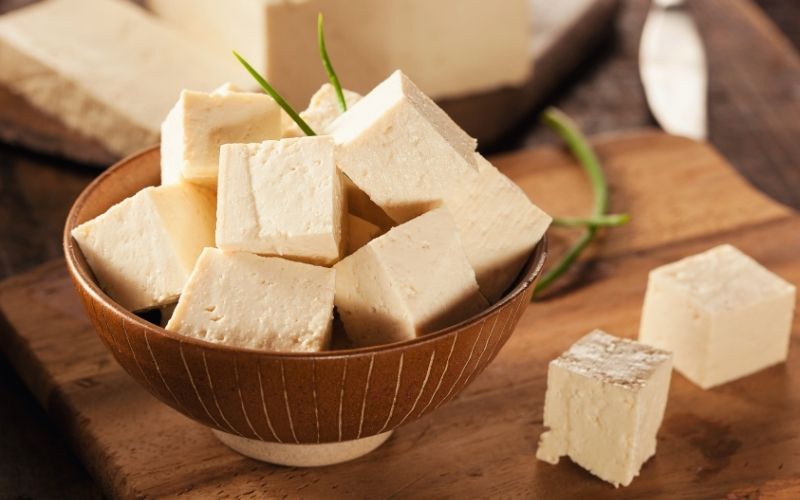
4 unusual reasons why I love to cook with tofu
Reason 1: it has the mouthfeel of fresh cheese and hard-boiled egg whites. Stop thinking of tofu as a meat replacement! Tofu is shorthand for “soy milk curds,” which is quite similar to how dairy cheese (“animal milk curds”) is made, notably the fresh curds used for “poutine.” People often say that tofu is tasteless, but the same is true for fresh cheese and egg whites. It’s the texture that’s special.
Reason 2: it creates contrast when you bite into it. Nothing beats biting into a cube of tofu that’s crisp on the outside and smooth on the inside. In a noodle soup with lots of chunky vegetables, soft tofu cubes that melt in your mouth also provide a lovely contrast. Adding tofu is an easy way to bring diverse textures into a dish.
Reason 3: tofu is so nutritious! As a soy-based food, tofu offers complete protein… yet hardly any fat. Plus, if you choose the calcium-set type (my favorite!), you’ll make it much easier to meet your daily calcium target. (See my article: calcium for vegans.)
Reason 4: it’s extremely versatile. There’s always different types of tofu in my fridge, ready to complement my favorite veggies in a bowl, stir-fry, soup, or scramble. It can even be thrown in the power blender with a little broth, roasted vegetables, and seasonings to become a luscious sauce.
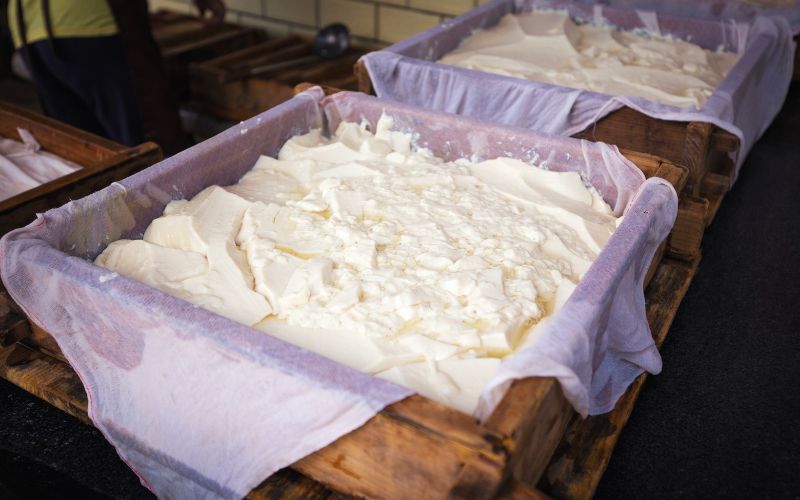
Traditional tofu making
Not every tofu is the same!
There are many varieties of tofu. Here are some of the factors that come into play to create all that diversity:
- Coagulant type and quantity: calcium sulfate (gypsum) and magnesium chloride (nigari) are the two main types of curdling agents used in commercial tofu. (You can also buy those products at gourmet cooking stores for home use.) Nigari comes from sea water and has a slightly bitter taste. I personally prefer calcium-set tofu. A firmer tofu requires more curdling agent, or a combination of both, which creates a distinct flavor.
- Regular versus silken: In regular tofu, as described above, the whey (the watery residue that separates from the curds) is pressed out, resulting in a kind of dense loaf (like cheese). Silken tofu, usually nigari based, is made without removing the whey and has a custard-like consistency.
- Soy bean origin: The soil in which the beans were grown will impart a subtle flavor to the beans, as will the water used. Some brands sell tofu made with soy beans that were previously sprouted, which also changes the taste. Some find sprouted tofu easier to digest (but personally I don’t care for it).
- Further transformation: Some supermarkets carry marinated, smoked, fried, pressed, puffed, and otherwise prepared tofu. There’s also ready-to-eat sweetened “dessert tofu” with fruit.
- Fermentation: Some soy products are fermented, like so-called “stinky tofu” – an acquired taste!
- Shelf stable: Silken tofu is also sold in aseptic package in a variety of textures. The brand Mori-Nu is most common in North America. Not a bad thing to keep in the pantry in case of a tofu emergency.
Buy different kinds of tofu and taste them – before cooking! – to experience the difference.
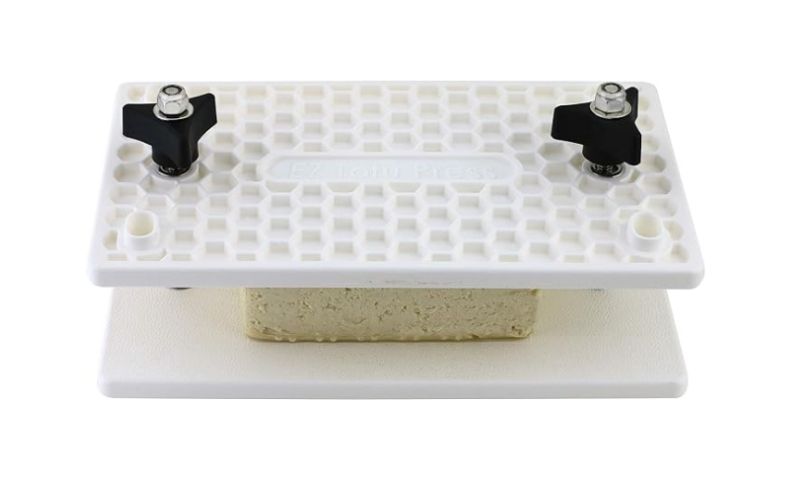
Medieval torture device for innocent soy curds
Stop pressing your tofu: it really doesn’t matter that much.
At the risk of being controversial, I think it’s a waste of time to press tofu. Instead, I just blot it dry with a clean tea towel and into the skillet it goes.
The high water content in tofu is what makes it juicy and delicious. Why remove it?
Many believe that removing the water allows tofu to absorb more of the marinade and become more flavorful. The YouTuber Sauce Stache conducted a thorough experiment that does not support such a practice. I encourage you to try replicating the experiment at home and come to your own conclusions. Let me know how it goes!
Should you marinate tofu ahead of time?
We may need to agree to disagree on this point, too, but I do not marinate tofu ahead of time (except when making feta-style tofu crumbs – see below).
I think the idea is to have the tofu absorb the flavors all the way through. My personal preference is to enjoy the contrast between the sauce or glaze that packs a flavor punch on the outside and the mild flavor of the tofu on the inside. This practice seems to align with the most common approaches to cooking tofu in the Chinese and Japanese traditions.
If you do choose to marinate tofu long before cooking, we can still be friends. You will find no shortage of recipes on the Internet. In general, they’ll involve a combination of acidic and sweet ingredients, plus something salty. Garlic and ginger may or may not be involved at the marinade stage. Soy sauce and balsamic vinegar are popular ingredients, along with maple syrup and orange juice. Experiment with your own combinations – nothing absolutely terrible can happen.

Save time on weeknight meals with batch cooking tofu
Weeknight dinners with multiple components, like bowls, come together quickly when some of the building blocks are just waiting to be reheated and assembled. Tofu is a perfect candidate to be prepared ahead of time during your weekend batch cooking session.
Baked tofu
Baked tofu goes well in bowls with grains and lots of vegetables, but let’s be honest here: we tend to eat it all up as a snack. Depending on how long you bake it for, it can get as chewy as jerky, though personally I prefer it to be softer.
Here’s how I do it:
- Preheat oven to 375 degrees Fahrenheit.
- Using a clean tea towel, pat a block of firm or extra-firm tofu to remove excess water. Leave it wrapped up on the side while I prepare the marinade.
- Mix together balsamic vinegar, soy sauce, and blackstrap molasses (a sweetener that happens to be a great source of iron). I use roughly 1/4 cup of the vinegar and soy sauce, and 1 tablespoon of sweetener, but never actually measure it. You can get creative with the marinade ingredients, of course.
- Unwrap the tofu and slice into squares (or triangles), about 5 mm / 1/4 inch thick.
- Dip the pieces into the marinade to coat then lay side by side on a parchment-paper covered baking sheet.
- Bake for 20 to 40 minutes, depending on the desired consistency, flipping partway through f you remember.
- Let cool a little and eat it up. Oops! I mean: refrigerate in an airtight container.
Tofu feta
This is the only exception to my “no advance marinating” practice when it comes to tofu: feta-style crumbs! The goal is to convey the same taste and mouthfeel as the traditional Greek dairy product, so advance preparation allows the brine to penetrate the tofu (not just coat the surface). In addition, some olive oil helps impersonate feta more convincingly.
Perfect for satisfying salads, or just to enjoy with sliced tomatoes in summer.
Here’s my approach:
- Using a clean tea towel, pat a block of calcium-set* firm or extra-firm tofu to remove excess water. Leave it wrapped up on the side while preparing the brine.
- In an airtight container large enough to contain the tofu, mix together equal(-ish) quantities of apple cider vinegar and lemon juice. Add a little olive oil, minced garlic, oregano, and salt. Miso paste is a great addition for extra saltiness and depth.
- Crumble the tofu into the marinade. I prefer 1/2-inch curds, but you could dice it if you prefer.
- Seal the container, toss it this side and that to cover every piece of tofu with marinade, and refrigerate for at least a day, preferably two or three. Flip the container occasionally to help brine every piece equally.
* I don’t recommend using nigari-set tofu here (those with “magnesium chloride” as first ingredient after the soy beans).
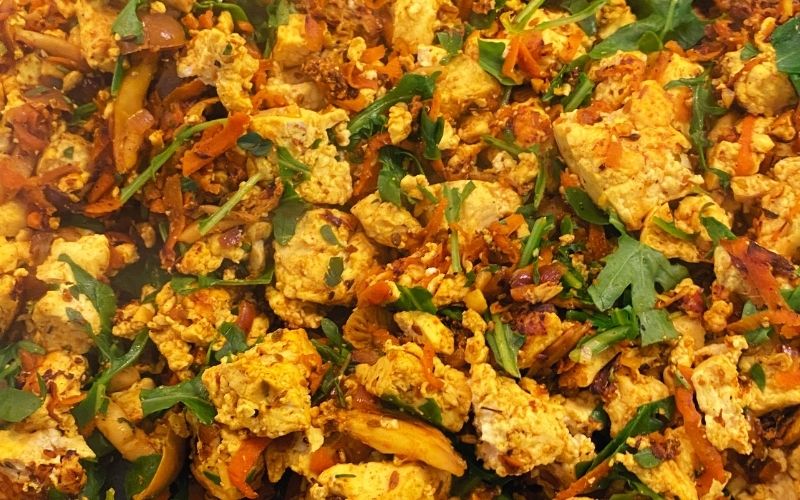
My favorite Saturday lunch: an improvised tofu scramble with lots of veggies.
Improvise quick weekday meals and lunches with these easy tofu tricks
Where tofu shines brightest at home is in simple improvised meals. Here are some ideas on how to cook tofu for quick weekday meals and lunches.
Stir-fries
Heat and speed are of the essence. Agile cooks can prep the veggies as they go but beginners may want to get everything chopped before proceeding.
- Choose three vegetables of different colors and dice them. Mince two cloves of garlic and grate an inch’s worth of ginger root.
- Preheat a heavy skillet or wok on medium-high heat.
- Drain a block of firm or extra-firm tofu and pat it dry with a clean tea towel. Dice into 1.5 cm / 3/4-inch cubes.
- Once the skillet is nice and hot, sauté the tofu with a pinch of salt and fresh ground pepper, stirring ever minute. You may use a teaspoon or two of oil (canola, peanut, or avocado), or not. After five minutes, the tofu should be golden on all sides. Remove from the skillet.
- Sauté the vegetables, starting with the most dense (e.g., carrots), stirring occasionally with a pinch of salt. After two minutes, add another vegetable, then another.
- After about six or seven minutes total, push the vegetables aside and add the garlic and ginger. Cook until fragrant, stirring constantly, about 30 seconds.
- Return the cooked tofu to the skillet, stir it all up, and splash with approximately 1/4 cup of soy sauce. If available, add the juice from one lime. You could have a fancier sauce, but simple is great.
- Serve on hot rice or fresh-cooked noodles, sprinkled with peanuts or sesame seeds.
Timing is everything when stir-frying, but even if you don’t execute on it perfectly, you’ll have a very decent meal. Take note of what you’ve learned and try again in a few days.
Long-noodle soup
This is my favorite way to enjoy medium tofu, and has saved me from ordering food many, many times.
- Cook some Asian-style noodles according to package directions. When done cooking, cool them with cold water so they don’t turn mushy. Set aside.
- Meanwhile, prepare the soup. The absolutely easiest way to do this is to bring 4 to 6 cups of water to a boil with an appropriate amount of vegetable bouillon (follow package directions).
- Add your vegetables, aiming for three of different colors. My favorite combo: diced orange sweet potatoes, diced Japanese eggplant, and chopped broccoli or bok choy. Shiitake mushroom slices are a great fit here, too!
- Keep at a low boil until all vegetables are tender, 10 to 20 minutes.
- Dice a block of medium tofu into 1-inch cubes. Careful as it is fragile.
- Prepare each bowl with a handful of noodles and put a few cubes of tofu on top. Ladle the piping hot veggie soup on top along with broth.
- Slurp away! Even better if topped with a forkful of vegan kimchi.
Tofu scramble
I make a tofu scramble most Saturdays at lunchtime to use up leftover veggies from the previous week’s grocery run. Check out my method in this other blog post: How to make tofu scramble (your way)!
Creamy sauce
If you have a power blender (Vitamix or similar), this is the ultimate quick comfort meal.
- Cook pasta according to package directions. Important: save a cup of hot cooking water before draining.
- Throw half a block of medium or firm tofu (not extra-firm) in the blender jar, along with a handful of raw cashews and some seasonings (nutritional yeast, miso paste, garlic powder, a teaspoon mustard, a little hot sauce, maybe a splash of apple cider vinegar). If you have roasted red peppers or sundried tomatoes (in oil or rehydrated), add some for a rich rosé sauce. Cooked carrots will yield an orange sauce, perfect for macaroni noodles.
- Blend until smooth, adding a little bit of the pasta cooking water as needed.
- Return the cooked pasta to the hot pot and add sauce to taste. Add a splash of pasta cooking water to stretch the sauce as needed. Stir to coat.
- Add two big handfuls of baby greens like spinach, kale, or arugula. They will wilt right in. If you have only full-grown greens, slice into thin ribbons before adding.
- Sprinkle with vegan parm nuts if you have some at hand and enjoy with a dash of hot sauce.
What’s your favorite way to enjoy tofu?
�

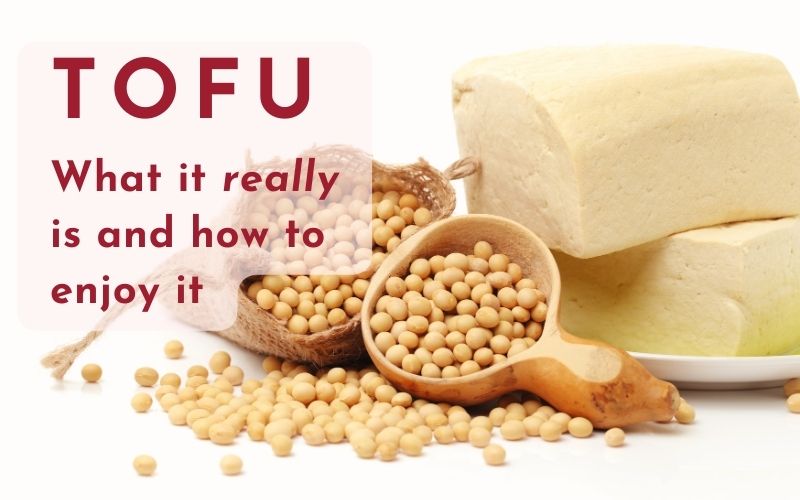

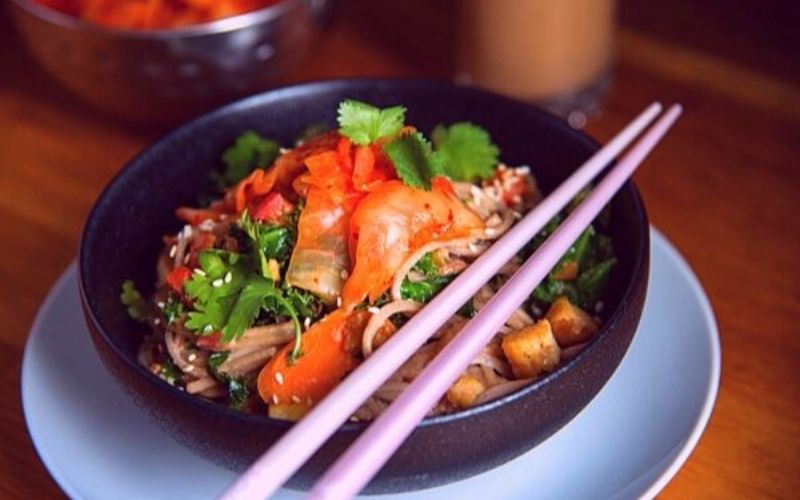


So helpful. Thank you! Been a vegetarian since I was a teen, but have only picked up tofu tricks occasionally along the way.
Thanks for dropping by Linda! What’s your favorite way to enjoy tofu?